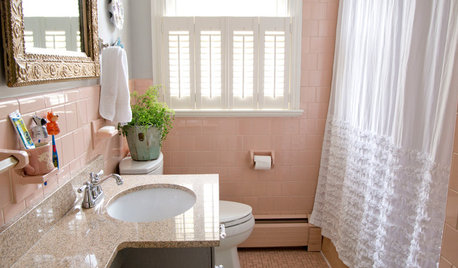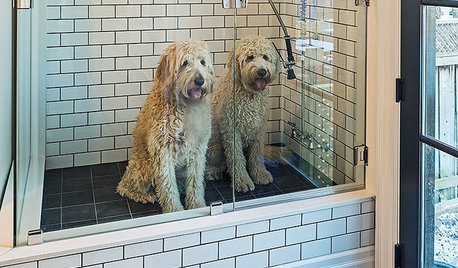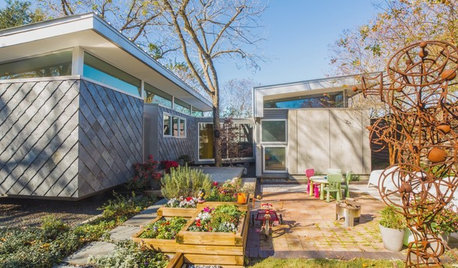newbie w/soaker hose and small, deep raised beds
janeccameron
16 years ago
Related Stories

FARM YOUR YARDHow to Build a Raised Bed for Your Veggies and Plants
Whether you’re farming your parking strip or beautifying your backyard, a planting box you make yourself can come in mighty handy
Full Story
BATHROOM DESIGNHouzz Call: Have a Beautiful Small Bathroom? We Want to See It!
Corner sinks, floating vanities and tiny shelves — show us how you’ve made the most of a compact bathroom
Full Story
MOST POPULARHouzz Tour: Going Off the Grid in 140 Square Feet
WIth $40,000 and a vision of living more simply, a California designer builds her ‘forever’ home — a tiny house on wheels
Full Story
LIFE7 Things to Do Before You Move Into a New House
Get life in a new house off to a great start with fresh paint and switch plates, new locks, a deep cleaning — and something on those windows
Full Story
THE HARDWORKING HOME8 Laundry Room Ideas to Watch For This Year
The Hardworking Home: A look at the most popular laundry photos in 2014 hints that dog beds, drying racks and stackable units will be key
Full Story
BATHROOM DESIGNWater Damage Spawns a Space-Saving Bathroom Remodel
A game of inches saved this small New York City bathroom from becoming too cramped and limited
Full Story
SMALL HOMESTiny Houzz Tour: Living the Good Life Their Way
This owner-built home in Australia may be on the small side, but it provides the perfect space for the family’s big dreams to come true
Full Story
HOUZZ TVHouzz TV: Fun Family Living in 980 Square Feet
In a place known for going big, a family of 4 opts for creative space savers and subtle luxuries instead
Full Story
GARDENING GUIDESGarden Myths to Debunk as You Dig This Fall and Rest Over Winter
Termites hate wood mulch, don’t amend soil for trees, avoid gravel in planters — and more nuggets of garden wisdom
Full Story
EARTH DAYGrow a Beautiful Garden With Ecofriendly Greywater
Reducing home water waste means lower bills and a healthier planet. Here's how to set up a greywater home irrigation system that can help
Full StoryMore Discussions






Violet_Z6
justaguy2
Related Professionals
Allentown Landscape Architects & Landscape Designers · Accokeek Landscape Architects & Landscape Designers · Comstock Park Landscape Architects & Landscape Designers · East Rancho Dominguez Landscape Architects & Landscape Designers · Oconomowoc Landscape Architects & Landscape Designers · Wixom Landscape Architects & Landscape Designers · Arlington Landscape Contractors · Cockeysville Landscape Contractors · Fairhope Landscape Contractors · Fort Atkinson Landscape Contractors · Gresham Landscape Contractors · Holtsville Landscape Contractors · Point Pleasant Landscape Contractors · Shenandoah Landscape Contractors · Mount Vernon Driveway Installation & MaintenanceViolet_Z6
janeccameronOriginal Author
marial1214
bigoledude
nygardener
chelsea_2016